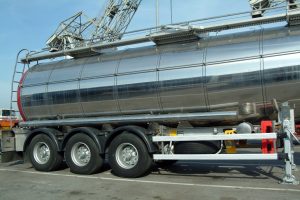Summary
– Hydractive suspension: its definition
– Characteristics of hydractive suspensions
– Advantages and disadvantages of hydractive suspensions
Whether it’s a highway, downtown street or country road, it’s not uncommon for the roadway we drive on to change its appearance. In such cases, you must be particularly careful when driving so as not to damage your vehicle… unless it is equipped with the hydractive suspension system. What is it all about? This post tells you everything!
Hydractive suspension: its definition

The hydractive suspension system filters out irregularities in the road, just as hydraulic suspensions did in the past.
The novelty is the electronic part connected to the system, which allows a more efficient and autonomous use of the process through some new sensors.
This old technology, which has been put back on the agenda by the manufacturers, allows the automatic adaptation of the vehicle’s height according to its speed and the state of the road surface. In this way, road handling is preserved and passenger comfort is ensured.
The car can be raised by up to 20 mm if the speed is below 60 km/h without the driver having to do anything: the system is intelligent and makes decisions on its own after a few quick calculations.
Good to know: don’t expect to be subjected to constant movement due to your hydractive suspension. The suspension is stabilised at a reference height to ensure full safety, and the height only changes between 10 and 60 km/h if necessary. If the road surface is damaged but the vehicle’s speed is too high, nothing happens for safety reasons.
Hydractive suspension characteristics

The hydractive suspensions combine a hydraulic system with advanced electronics. Sensors are integrated into your vehicle to define before any action:
– the angle of the steering wheel;
– the speed of the vehicle;
– the height of the car;
– the state of the road according to variations.
If the right conditions are met, an electric motor starts up and activates a pump that will provide a sufficient flow of liquid to raise the car. The system is designed to cause as little sensation as possible for the driver and passengers. It acts silently.
Good to know: it is recommended that the system be overhauled every 5 years or every 200,000 km.
So, if you are looking for European auto specialists specialising in full car servicing, electronic diagnostics and mechanical repairs, Jobson Electronics is a trusted dealership alternative in Melbourne.
Advantages and disadvantages of hydractive suspensions
Benefits
Owning a vehicle equipped with a hydractive suspension means being assured of exceptional road handling and optimal comfort:
– The car adapts itself to the state of the road and frees your mind from certain worries: you no longer fear damaging your vehicle.
– The operation is smooth and silent: the pitching sensation and seasickness that used to be felt in the old models are a thing of the past.
– The system is intelligent and checks your speed and steering wheel angle before taking action. So it’s all done in complete safety.
Disadvantages
While the hydractive suspension system has many advantages, it does suffer from a few shortcomings: maintenance must be scrupulous! If the car owner is not careful, the system can quickly get stuck and the repair is very expensive.
Worse, if the hydraulic pressure drains, the whole car will not be able to run!
Good to know: the dashboards are equipped with indicator lights that warn you of the level. So you will never be caught off guard.




